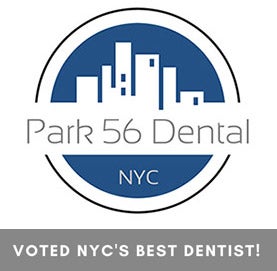-
11 Common Dental Problems
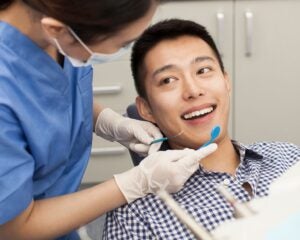
Are you self-conscious about your smile? Do you want to prevent oral health problems before they start? Learning about common tooth and gum issues goes a long way toward keeping your smile healthy and beautiful. Here are 11 of the most prevalent dental problems you should know about.
- Cavities: When plaque builds up, it slowly destroys the hard outer layer of your teeth, known as enamel. Soon, a hole forms. The decay continues to spread until you get a filling.
- Gum disease: Red, tender gums that bleed easily when you floss are a sign of gum disease. The early stage, known as gingivitis, is easy to reverse, so act quickly if you suspect a problem.
- Staining and discoloration: Dark-colored foods, tea and coffee, tobacco, certain medications, and traumatic injury can stain or discolor your teeth. Routine cleanings, whitening, and veneers are all options for restoring a bright, white smile.
- Sensitivity: Teeth can become sensitive to hot and cold temperatures because of worn enamel, exposed roots, fractures, and more. Brushing with desensitizing toothpaste may help.
- Crooked teeth: Around 75 percent of the population has either worn braces or could benefit from straightening their teeth. Invisalign is a convenient, nearly invisible way to achieve the smile you’ve always wanted.
- Gaps between the teeth: If two or more of your teeth don’t quite touch, you can close the gap with Invisalign or other orthodontic procedures. You can also instantly correct the issue with cosmetic solutions like bonding or veneers.
- Toothaches: If you experience a sudden pain in one or more teeth, set an appointment with an emergency dentist right away. In the meantime, rinse with warm salt water and take over-the-counter pain relievers.
- Chipping and cracking: Enamel is the hardest substance in the human body, but it can still chip and crack under traumatic circumstances. Your dentist may recommend a crown, bonding, or root canal followed by a crown or veneer.
- Impaction: Impacted teeth are those that fail to erupt through the gums. This is common with wisdom teeth. Depending on your situation, you may need oral surgery.
- Nighttime tooth grinding: Known as bruxism, this condition can cause headaches, jaw soreness, cracked teeth, or receding gums. Ask your dentist to fit you with a custom mouthguard to protect your smile.
- Bad breath: In about 85 percent of people with chronic bad breath (also called halitosis), an underlying dental condition is to blame. Keep your mouth clean and fresh by brushing, flossing, rinsing with therapeutic mouthwash, and visiting the dentist regularly.
These common dental problems are no fun, but fortunately, you can prevent most of them with good at-home oral care and routine dentist appointments. For personalized tips to keep your smile healthy and bright, or to schedule your next dental exam and cleaning, please contact Park 56 Dental at (212) 826-2322. We are the best dentist in NYC, offering a spa-like experience that makes going to the dentist a pleasure!
-
How to Care for Your Invisalign Aligners
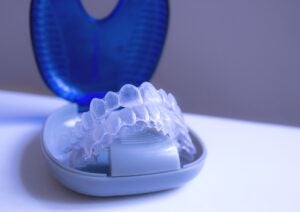
One of the most significant benefits of Invisalign is that you can remove it to eat and drink. Unlike metal braces, this means there are no dietary restrictions, so you can eat whatever you want while straightening your smile with nearly invisible plastic aligners! Still, keeping the aligners clean is an important part of your treatment plan. With proper care, you’ll keep your Invisalign clear, odorless, and free of bacteria buildup. Here’s what you need to know.
Rinse Your Aligners Whenever You Take Them Out
Rinsing your aligners helps remove saliva, bacteria, and plaque before putting them in their storage case. This is an important step even if you’re not at home, so be sure to locate a drinking foundation or bathroom sink before removing your Invisalign.
Remember, you should take out your aligners to eat and drink anything other than water. Otherwise, the clear plastic is liable to stain. Still, you should wear your aligners for at least 22 hours a day to ensure your treatment stays on schedule, so refrain from snacking too often.
Clean Your Invisalign Morning and Night
When brushing your teeth before bed and after waking up each morning, clean your Invisalign as well. This involves brushing the aligners with a soft toothbrush (different from the one you use on your teeth) with clear, anti-bacterial liquid soap. It may seem counterintuitive, but you should not use toothpaste to brush Invisalign aligners. Doing so could cloud the plastic and make it appear more visible in your mouth.
Invisalign care also involves soaking the aligners in a cup of manufacturer-provided cleaning crystals dissolved in lukewarm water. Soak for 15 minutes once a day to keep your aligners sanitized and odor-free.
Brush After Eating
Proper Invisalign care isn’t just about cleaning the aligners—it’s also about having good oral hygiene. In addition to brushing and flossing each morning and night, Invisalign wearers should make a habit of brushing after each meal or snack before putting the aligners back in. This prevents trapping food particles against your teeth, which could lead to cavities and staining. If brushing isn’t an option, rinse your mouth out thoroughly with water.
Store Your Invisalign Aligners in a Dedicated Case
Whenever you remove your aligners, put them in their case immediately. Otherwise, you risk damaging, losing, or accidentally throwing away your Invisalign. This tip applies even when you’re out and about, so it’s helpful to have two cases—one for at home and one for on-the-go.
Remember to keep your Invisalign case clean as well. Once a week, brush the case with the same toothbrush and soap you use with your aligners. Let the case air dry before closing it again.
If you have more questions about caring for Invisalign, or you’re ready to straighten your smile using this cutting-edge technology, please contact Park 56 Dental at (212) 826-2322. We offer a complimentary consultation with our knowledgeable dentist so you can find the answers you seek before moving forward with your Invisalign treatment.
-
Why it’s Important to Have Your Teeth Professionally Cleaned Regularly
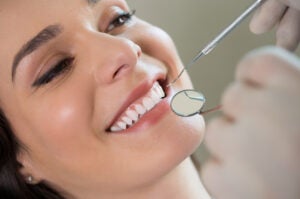
Routine dentist visits include an oral exam and professional teeth cleaning. Performed by a licensed and registered dental hygienist, cleanings remove stains and buildup to brighten and protect your smile.
Unfortunately, almost one-third of Americans forgo routine teeth cleanings, which the American Dental Association recommends getting at least once every six months. If you think brushing and flossing are just as good as professional cleanings, think again! Here’s what can happen if you skip your routine dentist visits.
- Increased risk of staining and cavities: Even if you’re diligent about at-home oral care, cavities can still develop. You need help clearing away tooth-staining, cavity-causing plaque and tartar that are nearly impossible to remove without professional tools.
- Greater chance of gum disease: Plaque and tartar can also build up along the gum line, irritating this soft tissue and causing periodontal pockets to form. If you never have your teeth professionally cleaned, bacteria, food particles, and plaque could collect in these pockets, further irritating your already-sensitive gums.
- Untreated bad breath: Hard-to-reach bacterial deposits may cause bad breath. You can temporarily mask the unpleasant odor with mints, gum, or mouthwash, but the only way to tackle this problem head-on is to have your teeth professionally cleaned.
- Undiagnosed oral health problems: Some dental emergencies occur quickly and noticeably, including traumatic injuries, loose crowns, and fractured teeth. Others develop more slowly, such as cavities, abscesses, and oral cancer. With routine dental exams, you can receive an early diagnosis and begin treatment for any developing health problems.
- Complications during pregnancy: It’s more important than ever to see a dentist when you’re pregnant. Because of unprecedented hormone fluctuations, you have an even higher risk of cavities, gum disease, tooth erosion, and other problems if you skip your cleanings as an expecting mother.
- Risks to your overall health: Neglecting routine oral care can put other aspects of your health at risk. For instance, the oral bacteria associated with gum disease are linked to an increased risk of cardiovascular disease, respiratory infections, rheumatoid arthritis, and other conditions. Protect your overall well-being by keeping your teeth and gums healthy with professional cleanings.
- Potential tooth loss: If allowed to progress, gum disease can eventually weaken the bone structure that holds your teeth in place. In severe cases, your teeth may even start to fall out. Don’t let it come to this! Get your teeth professionally cleaned twice a year to maintain a healthy, beautiful smile.
Even if it’s been years since you’ve been to the dentist, it’s never too late to go in for a dental cleaning! The sooner you commit to taking better care of your smile, the better chance you have of avoiding the complications outlined above.
Are you looking for the best dentist in NYC? Come to Park 56 Dental! Our spa-like office, caring staff, and experienced dental professionals make going to the dentist a pleasure. Contact us online or call (212) 826-2322 to schedule your first visit with us today.
-
How to Stop Drinking Soda and Other Sugary Drinks

Soda and other sugar-sweetened beverages are highly popular in the United States. According to the CDC, about half of all adults and 63 percent of teens consume at least one sugary drink every day. Despite its popularity, most people know that drinking soda is unhealthy. The empty calories and sugar in soda are linked to obesity, diabetes, weight gain, and various chronic conditions. Soda also hurts your teeth. Sugar and acid (found in both regular and diet soda) erode protective tooth enamel and lead to cavities.
If you have a goal to stop drinking soda, you may be unsure how to overcome your cravings. Follow these tips to lower your sugary drink intake and benefit your oral and overall health.
- Drink more water: Sometimes, you may crave soda if you’re simply thirsty. Drink a tall glass of water and see if the craving subsides. Water is exactly what your body needs to stay hydrated without any added sugar, acidity, calories, or artificial colors and sweeteners.
- Stop buying soda: Make it harder to give in to your cravings by never keeping soda in the house. This may require you to get the whole family on board with your goal to stop drinking sugary drinks.
- Replace soda with healthy alternatives: Curb your soda cravings by drinking flavored sparkling water, kombucha, green tea, or coconut water. You may find these satisfy your craving better than plain water because they more closely resemble soda. However, don’t replace soda with fruit juice, which can have a surprising amount of added sugar and empty calories.
- Curb your cravings: Take your mind off soda by chewing gum or snacking on a sweet, healthy treat, such as apple slices, berries, grapes, yogurt, or a smoothie.
- Manage your stress levels: Stress can induce cravings for soda and other unhealthy food. As a result, stressed individuals tend to consume more calories than non-stressed people. Healthy ways to manage stress include physical exercise, yoga, meditation, aromatherapy, journaling, and counseling.
- Create a support system: If you’re serious about not drinking soda, don’t keep it a secret. Tell your friends and family so they can help you stay accountable. Sharing your goal also gives you people to talk to when a craving strikes.
- Drink in moderation: If you decide to have soda occasionally, limit the damage by having no more than one drink per day. Also, avoid drinking soda close to bedtime, use a straw, and rinse your mouth with water afterward. Wait to brush for at least 30 minutes so your acid-attacked teeth have time to recover before you subject them to the friction of your toothbrush.
Whether you cut out soda entirely or continue to drink it in moderation, regular dental cleanings are vital for maintaining a healthy smile. Contact Park 56 Dental at (212) 826-2322 to schedule your next visit to our NYC dentist office. We provide services in a spa-like environment to ensure your complete comfort and satisfaction.
-
Are Dental X-Rays Safe?
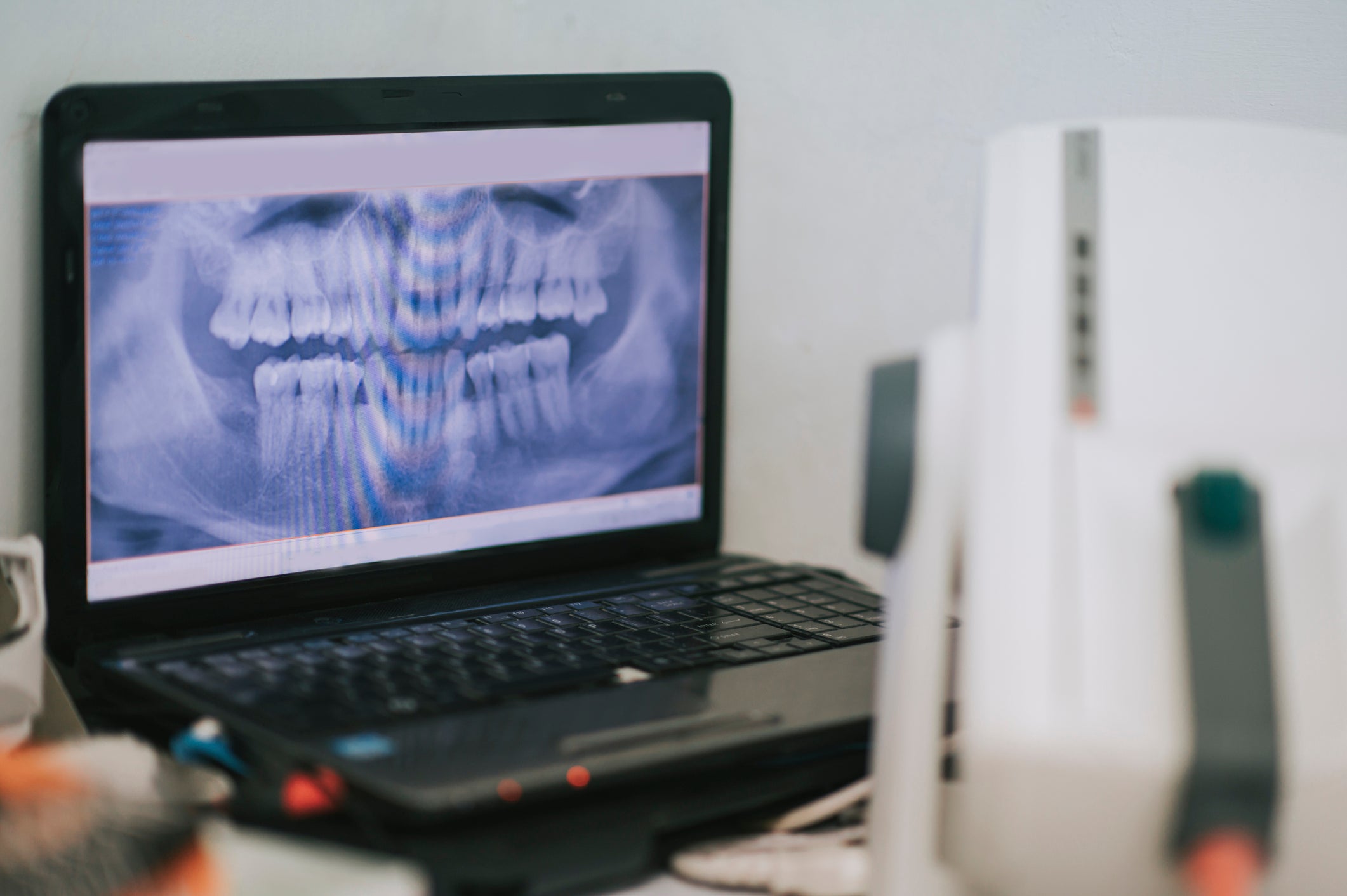
When you visit the dentist for a routine appointment, you may have dental X-rays taken. This is typically done once a year to track your oral health. As a concerned patient, you may be wondering—are dental X-rays safe for you and your family? Why are they even necessary? Find the answers to your questions here.
The Importance of Dental X-Rays
While a visual inspection of your mouth is an important part of any oral exam, your dentist can’t see what’s going on beneath the surface. The purpose of an X-ray is to inspect the jaw bone, tooth roots, and internal layers of your teeth. Your dentist may recommend X-rays for several reasons:
- Diagnose oral health problems, from cavities and gum disease to abscesses and bone infections, before the condition gets any worse.
- Monitor recovery following a maxillofacial
- Determine if certain treatments are necessary, including wisdom tooth extraction and orthodontics.
Types of Dental X-Rays
Dental X-rays come in many forms. The type you receive depends on the reason your dentist wants to X-ray your mouth. Here are the most common dental X-rays in use today:
- Bitewing X-rays allow the dentist to check for cavities and assess the filling in the crowns of your teeth.
- Periapical X-rays display teeth from the crown to the root so the dentist can check for cavities, root problems, and issues in the surrounding jaw bone.
- Panoramic X-rays track a child’s tooth development to determine if braces are necessary.
- Occlusal X-rays show the roof or floor of the mouth and are used to find yet-to-erupt teeth.
- Extraoral X-rays capture images of a child’s skull to monitor overall jaw development.
- Cone beam computed tomography (CBCT) offers a 3D view of the mouth to help the dentist assess tooth spacing and development.
What about Radiation Exposure?
X-rays emit a small amount of radiation, which is why some patients worry about their safety. However, consider that the average American receives a radiation dose of about 620 millirem every year. The American Dental Association reports that intraoral X-rays expose patients to 0.5 millirem of radiation, while panoramic dental X-rays produce a 1.0 millirem dose of radiation.
Digital dental X-rays generate even less radiation. Many dentists use digital technology to take X-rays these days—not only for their increased safety but because they provide clearer images in a shorter amount of time. Even with negligible radiation levels from digital X-rays, the ADA still recommends that patients wear a lead apron over their abdomen and neck for added protection.
All things considered, the benefits of dental X-rays far outweigh the risks. Park 56 Dental is pleased to offer advanced digital X-rays to our patients. As part of our focus to make the dental experience as safe and comfortable as possible, we are happy to answer any questions you have. Give us a call at (212) 826-2322 or contact us online to learn more or schedule an appointment at our NYC dentist office.
-
The Dos and Don’ts of Wearing Invisalign
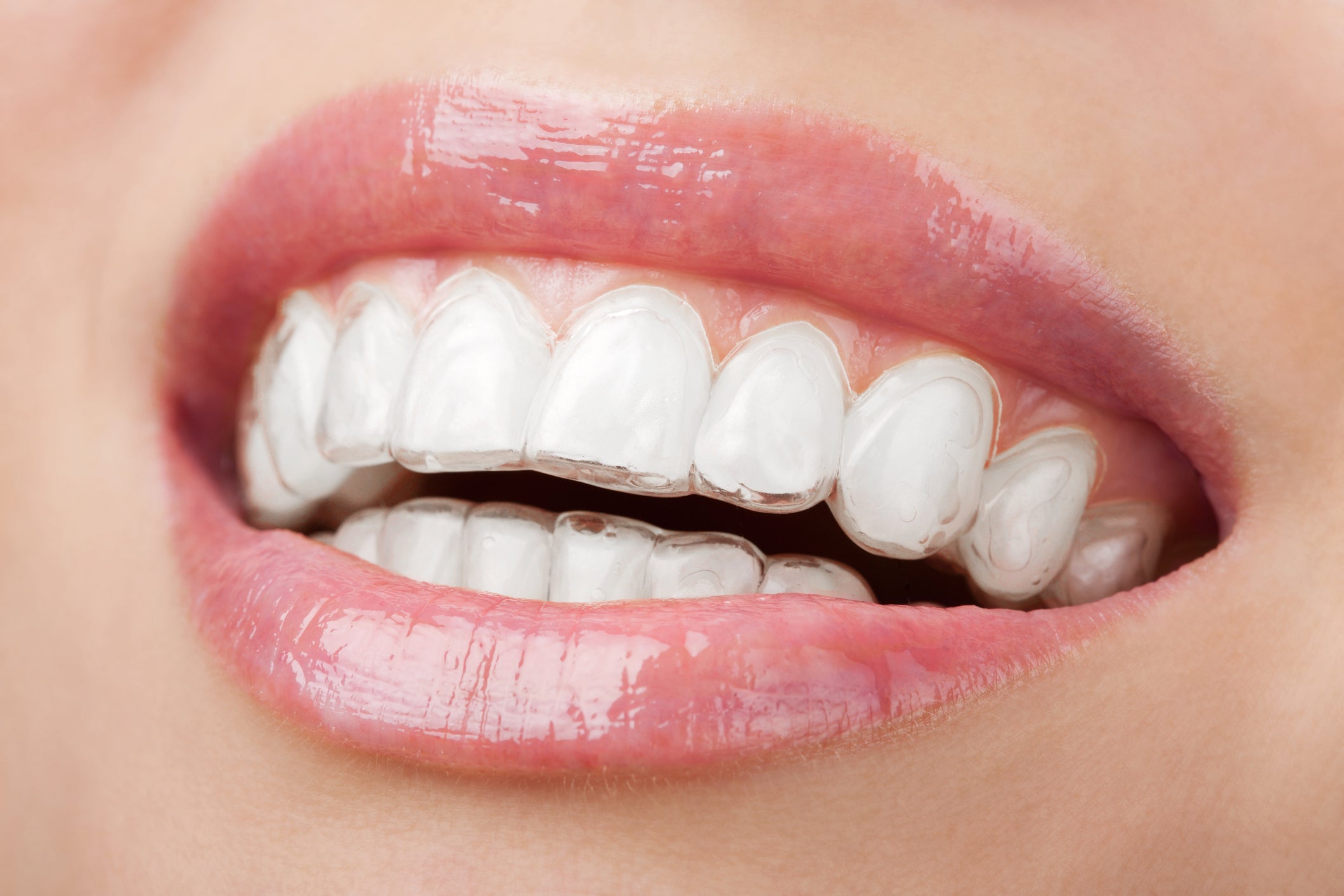
Have you chosen Invisalign over traditional braces to straighten your teeth? As a fast, effective, virtually invisible way to get the smile of your dreams, Invisalign is popular among teens and adults alike. Just be aware that this tooth-straightening method has specific care requirements. Here are the basic dos and don’ts of wearing Invisalign to ensure the best results from your investment.
- Do soak and brush your trays daily: Start off each morning by soaking your aligners in denture cleaner or Invisalign cleaning crystals. Then, remove residue by brushing the aligners using a separate toothbrush from the one you use to brush your teeth. Rinse the trays and slip them back into your mouth. Do this again every night before bed.
- Do remove the trays to eat and drink: Apart from water, you should not eat or drink anything while wearing your Invisalign. Food and beverages can stain the clear plastic aligners and encourage particles to become stuck between your teeth.
- Do brush and floss after eating: When you finish a meal or snack, brush and floss to remove particles before putting your Invisalign back in. If you can’t do this while away from home, at least rinse your mouth out or chew sugarless gum for a few minutes.
- Do wear your Invisalign 20 to 22 hours a day: If you’re not eating or drinking, you should be wearing your aligners, including while you sleep. Failing to follow this schedule could delay your treatment.
- Don’t snack excessively: Are you accustomed to snacking or drinking soda and coffee throughout the day? You may need to reassess these habits. Every time you remove the trays to eat and drink, you must clean your mouth to prevent cavities and staining. Your oral health—not to mention your waistline—will thank you for cutting down on snacks and drinks between meals during Invisalign treatment.
- Don’t leave your trays lying around: To prevent losing or damaging your aligners, store them in their carrying case whenever you remove them from your mouth. This also protects against bacteria buildup. Help the case stay clean by rinsing your trays before putting them inside.
- Don’t leave town without your next set of aligners: Invisalign treatment involves swapping out the trays every few weeks. If you’re going on vacation, make sure you bring the next set with you to avoid delaying the results.
- Don’t smoke: Tobacco will quickly discolor your clear aligners, not to mention stain your teeth and cause numerous other oral health problems. If you are currently a smoker, consider quitting before you begin Invisalign treatment. Your overall health will improve if you do.
Park 56 Dental is a certified Invisalign provider in NYC. We can help you plan your smile transformation from the comfort of our spa-like office. Here, you’ll receive exceptional care during convenient hours that fit your schedule. To learn more about Invisalign, please contact us online or call (212) 826-2322 and schedule a complimentary consultation today.
-
Dental Care During Pregnancy
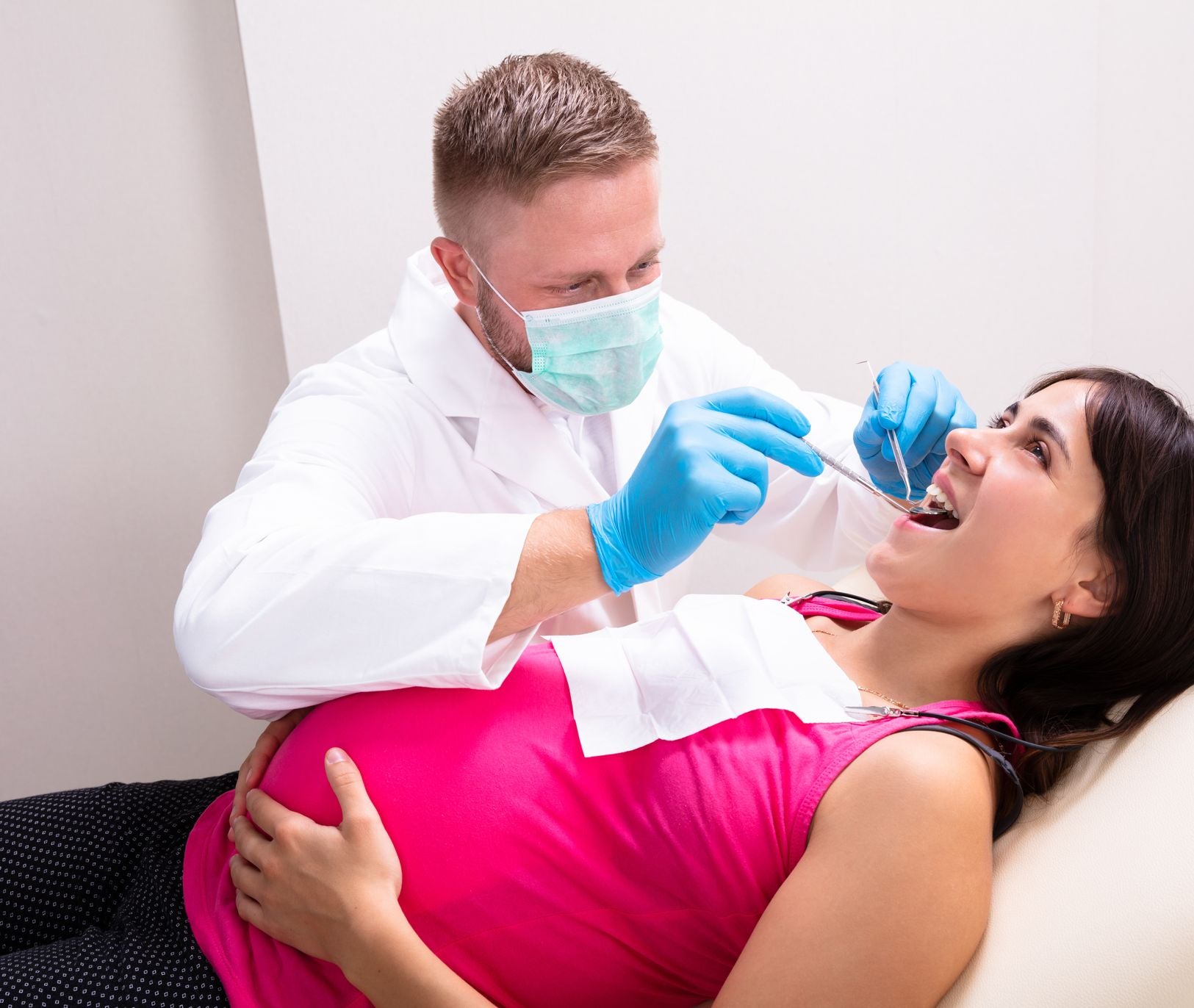
Routine dental care is important for everyone at any age, but it’s particularly crucial for expecting mothers. After all, pregnancy increases the risk of several oral health problems, and developing these problems could adversely affect your baby’s health. If you have a child on the way, follow these dental care tips to promote a healthy pregnancy.
How Pregnancy Affects Dental Health
The changes your body undergoes while pregnant may increase your risk for the following conditions:
- Cavities: Sugar cravings and the temptation to skip brushing because you’re tired or nauseous can make you more cavity-prone. The bacteria that cause cavities can then pass to your unborn baby, causing problems for the child’s teeth later in life.
- Gingivitis and gum disease: Hormonal changes increase the risk of “pregnancy gingivitis,” which affects 60 to 75 percent of pregnant women. Red, swollen, tender gums can develop into more serious gum disease, infections, and tooth loss if left untreated.
- Eroded tooth enamel: Increased vomiting from morning sickness may expose your teeth to excessive stomach acid. This can eat away at the outer layer of your teeth known as enamel, leading to tooth sensitivity, discoloration, and chipping.
- Loose teeth: Rising hormone levels can cause your teeth to loosen temporarily.
- Pyogenic granuloma (pregnancy tumors): Too much plaque can cause tender lumps to form on your gums. These aren’t cancerous, but they cause discomfort and bleed easily. Proper dental care during pregnancy can prevent pyogenic granuloma.
How to Prevent Dental Problems During Pregnancy
Keep your teeth and gums healthy throughout your pregnancy with these tips:
- Brush and floss: Brush for two minutes at least twice a day with a soft-bristled toothbrush and fluoride toothpaste. Then, floss once a day to remove plaque from between the teeth.
- Use mouth rinse and antacids: If brushing makes you feel nauseous, a temporary alternative is to rinse your mouth with a solution of one teaspoon baking soda and one cup water. You can further reduce acidity in your mouth by taking antacids. Just be sure to speak with your doctor first.
- Eat a healthy diet: Limiting sweets reduces your cavity risk. Then, eating more fruits and vegetables, lean meats, whole grains, and low-fat dairy products provides you and your baby with nutrients that promote strong teeth and healthy gums.
- Visit the dentist: Don’t skip your routine appointment because you’re pregnant. Exams are more important than ever right now! During the visit, tell your dentist about your pregnancy, any medications you’re taking, and whether your pregnancy is high-risk. Also, disclose any changes you notice with your teeth and gums.
- Get dental X-rays if needed: Rest assured that dental X-rays can be performed safely during pregnancy. The technician takes special care to safeguard you and your baby by shielding your abdomen and thyroid.
Dental checkups before and during pregnancy are essential to find and treat problems early. To schedule your next appointment, please contact Park 56 Dental in NYC by calling (212) 826-2322.
-
How to Buy the Right Toothbrush
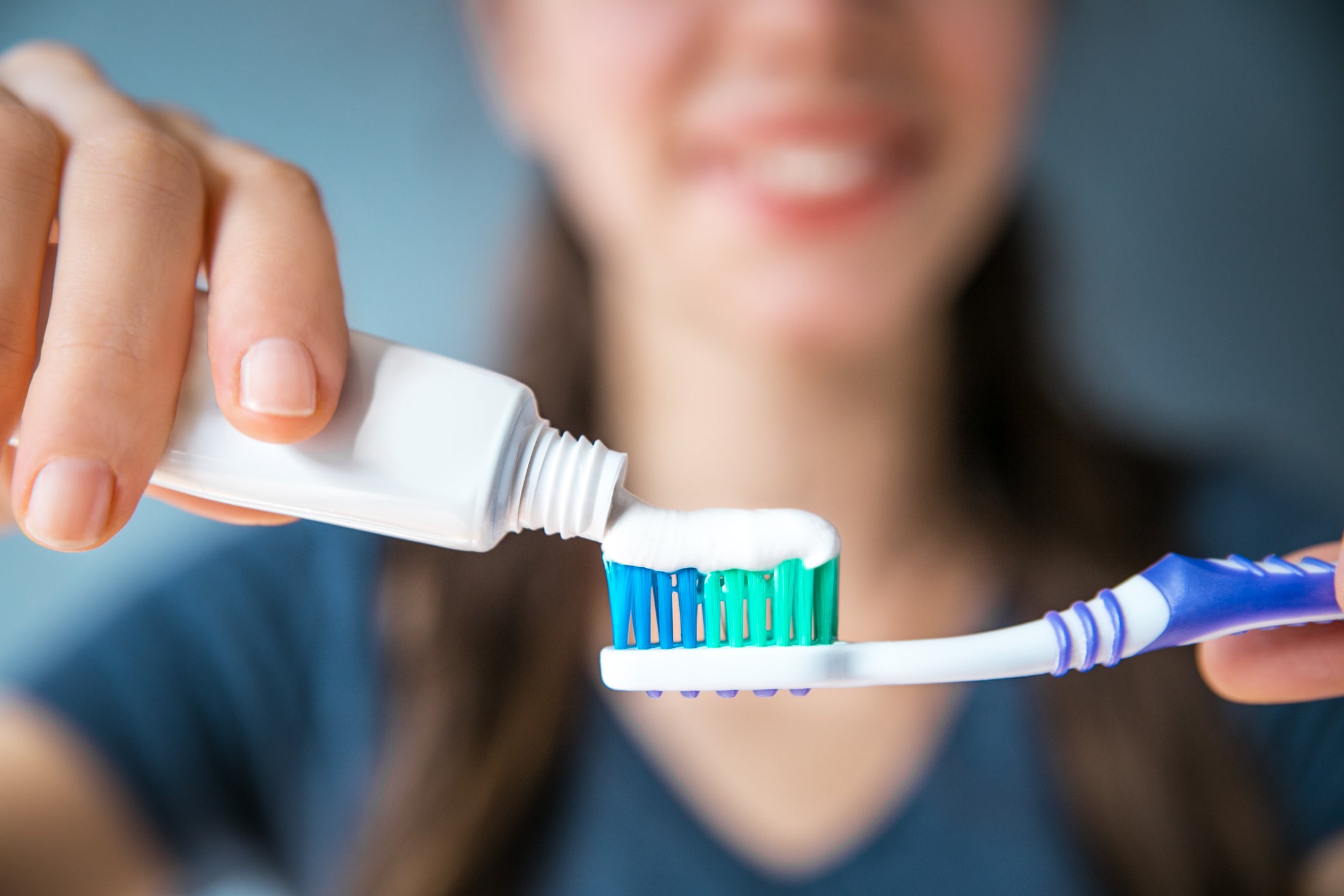
Do you feel overwhelmed every time you walk down the toothbrush aisle? Perhaps you have resorted to reaching for whatever’s on sale, buying a toothbrush because it’s your favorite color, or closing your eyes and choosing one at random. For the best results, you should make your selection more strategically. Brush up on how to buy the right toothbrush for your needs.
- Look for soft bristles: Check the packaging on different toothbrushes, and you’ll notice “soft,” “medium,” or “hard” on the label. Most people benefit from soft bristles, which clean your teeth effectively without damaging the enamel or irritating your gums. Just be careful to brush gently, even when using a soft-bristled brush, to avoid tooth sensitivity and receding gums.
- Find a small-headed toothbrush: The benefit of a small head is that the bristles can more easily reach behind your back molars. To make sure you scrub every hard-to-reach surface, avoid opening your mouth too far while brushing, which tends to push your toothbrush forward.
- Avoid cheap, no-name toothbrushes: Chances are those dollar-store toothbrushes are not approved by the American Dental Association. They may be made of inferior or even unsafe products, so leave them on the shelf.
- Choose a comfortable handle style: The toothbrush should fit comfortably in your hand. To achieve this, you may want one with a contoured handle or a flexible head that bends to reach every tooth with less effort on your part. These qualities come down to personal preference, so you may need to try a few styles to find what you like best.
- Consider an electric toothbrush: If you have trouble brushing for as long or as thoroughly as you should, an electric toothbrush could be a good investment. Studies show that electric toothbrushes remove more plaque than manual ones. The automatic bristle movement is especially beneficial for people with braces or limited wrist mobility.
- Shop wisely for your children: Babies and toddlers need the right toothbrush, too. Find one with a miniature head designed to fit their tiny mouths. While you’re at it, let your child select a toothbrush in a fun color or with a popular cartoon character that will encourage them to brush twice a day. Also, remember to use just a smear of kids’ toothpaste for safety in case they swallow rather than spit.
- Know when to replace your toothbrush: Eventually, your toothbrush will wear out, and you’ll need to shop for a new one again. Replace it every three months or when the bristles begin to look worn and frayed, whichever comes first. You should also replace your toothbrush after recovering from an illness to help prevent re-infection.
Brushing (and flossing!) every day is an effective way to maintain good oral health. However, it’s also important to visit the dentist every six months. Routine cleanings remove plaque and tartar to keep cavities and gum disease at bay. Schedule your next appointment at Park 56 Dental by calling (212) 826-2322 today.
-
The Connection between Diabetes and Oral Health
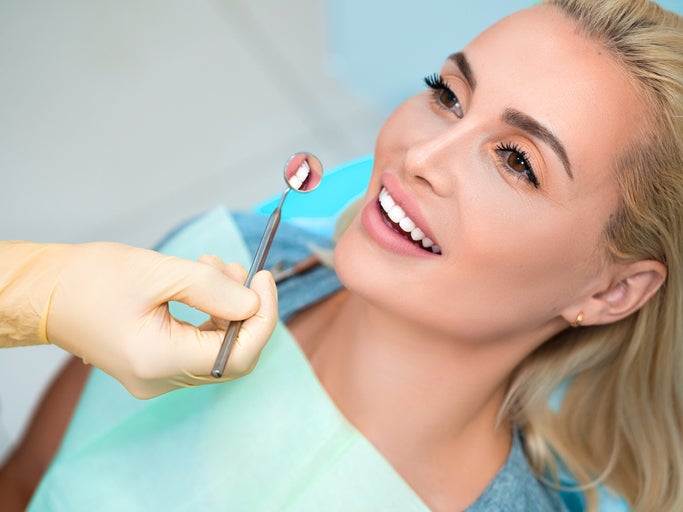
Diabetes affects how your body processes glucose (sugar), leading to high blood glucose levels and a host of related health problems. Diabetes can affect many areas of the body, including the eyes, kidneys, heart, and nervous system. Did you know there’s also a link between diabetes and oral health? Learn more about this connection and what you can do to promote a healthy smile.
Diabetes and Your Mouth
If left untreated, diabetes can take a toll on your oral health. Here are the potential problems you face:
- Periodontal disease: Diabetes reduces your body’s ability to fight the bacteria invading your gums, increasing the risk for periodontal disease (gum disease). This infection causes swollen, tender gums and may eventually lead to tooth loss. As with all infections, periodontal disease can cause blood sugar levels to rise. This, in turn, makes diabetes harder to control, and the vicious cycle continues.
- Tooth loss: Because advanced gum disease eventually causes your teeth to loosen and fall out, diabetes patients are more likely to face this oral health problem. In fact, one in five cases of total tooth loss is linked to diabetes.
- Cavities: Oral bacteria feed on the starches and sugars found in the food and beverages you ingest. Uncontrolled diabetes raises the glucose level of your saliva, giving bacteria more sugar on which to feed. This leads to more plaque buildup, which attacks your teeth and increases the risk of cavities.
- Dry mouth: Excessive thirst is a common symptom of high blood sugar. This is caused by the lack of saliva flow, a condition known as dry mouth. Without saliva to keep your mouth moist, your risk for cavities and periodontal disease increases.
- Thrush: This fungal infection may develop in your mouth as a result of low saliva flow and increased glucose levels.
How to Improve Oral Health if You Have Diabetes
Proper dental care is needed to prevent diabetes from damaging your teeth and gums. In addition to controlling your blood sugar levels with diet, exercise, and medication, we recommend following this dental care routine to improve your oral health:
- Brush your teeth twice a day.
- Floss once a day.
- Tell your dentist you have diabetes and report any symptoms you notice, such as dry mouth, loose teeth, or infections.
- Watch for early signs of gum disease, including redness, swelling, and bleeding gums.
- If you wear dentures, Invisalign, a retainer, or a mouth guard, brush this oral appliance daily.
- Avoid smoking. Tobacco use only worsens gum disease and other oral health problems.
- Visit the dentist at least twice a year to manage the oral health risks of diabetes.
At Park 56 Dental, we can help you prevent cavities, gum disease, tooth loss, and other oral health problems with routine teeth cleaning. We also offer restoration services to help you smile with confidence once more. To schedule an appointment with our NYC dentist, please contact us online or call (212) 826-2322.
-
How Smoking Affects Your Teeth and Oral Health
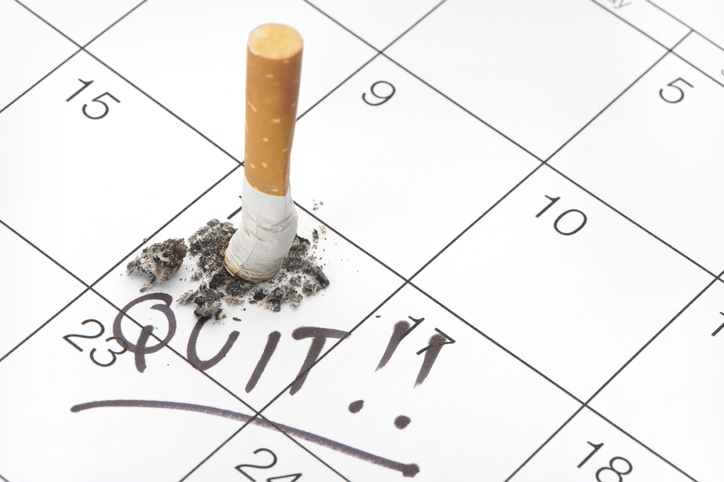
Do you or a loved one smoke cigarettes? If you’re looking for one more reason to quit, consider that tobacco use in any form raises your risk for oral health problems. Here are the issues associated with smoking cigarettes, cigars, and pipes or using smokeless tobacco:
- Gum disease: Also called periodontal disease, gum disease is an infection that causes red, swollen, tender, and bleeding gums. Smoking increases your risk of gum disease by weakening your immune system, which makes your body less capable of fighting off infection. In fact, smokers are twice as likely as nonsmokers to contract gum disease. The greater your tobacco use, the higher your risk.
- Tooth loss: As gum disease progresses, it eventually affects the underlying bone structure that anchors your teeth to your jaw. If the bone and tissue that hold your teeth in place break down, your teeth may loosen and need to be extracted.
- Plaque and tartar buildup: The chemicals in tobacco products decrease saliva flow, making it easier for bacteria to cling to your teeth and gums. If not removed daily with diligent brushing and flossing, plaque hardens into tartar, a cavity-causing, tooth-staining substance that can only be removed with professional cleaning.
- Cancer: Besides lung cancer, smoking can also cause cancer of the lips, mouth, throat, tonsils, and esophagus. The risk is six times higher among smokers. In fact, 90 percent of patients diagnosed with these oral cancers are tobacco users.
- Delayed healing: The reduced immune function caused by smoking impairs blood flow to the gums, making it harder for your mouth to heal following a tooth extraction, periodontal treatment, or oral surgery.
- Tooth discoloration: Stained, yellow teeth are a hallmark of smoking. Whitening products can sometimes counteract the effects temporarily, but the stains quickly return.
- Bad breath: Smoking leaves a stale film on your teeth and gums, resulting in “smoker’s breath.” You may be able to mask the odor with a mint for a short time, but the smell will return before long.
- Inflammation: Smoking triggers an immune response that increases the level of inflammatory markers in the bloodstream. This may increase inflammation throughout the body, including at the salivary gland openings and on the roof of your mouth.
- Darkened gums: Smoker’s melanosis, or a darkening of the gum tissue, is one response to irritating tobacco smoke. Up to 22 percent of cigarette and pipe smokers develop this oral change. There is no treatment, but the gums typically return to normal within six to 36 months of quitting.
Clearly, if you want to improve your oral health, kicking the tobacco habit is a great place to start. Your dentist can recommend useful products to help you quit, such as nicotine gum and patches. You can also pursue treatments to reverse the damage caused by smoking. For more useful tips, or to schedule an appointment with our NYC dentist, please contact Park 56 Dental online or call us at (212) 826-2322.
RECENT POSTS
categories
- Uncategorized
- Cosmetic Dentistry
- Veneers
- Healthier Teeth
- Teeth Whitening
- Dental Health
- Video
- Dental Emergencies
- Invisalign
- Dental Implants
- Root Canal
- Sedation Dentistry
- Infographic
- Dental Crowns and Bridges
- Dental Anxiety
- Gum Disease
- COVID-19
- Bad Breath
- New York Dentist
- Cut out sugar
- General Dentistry
- Oral Health
- Oral Cancer
- Dry Mouth
- Gum Health
- Toothache
- Dental Sealants
- Cavities
